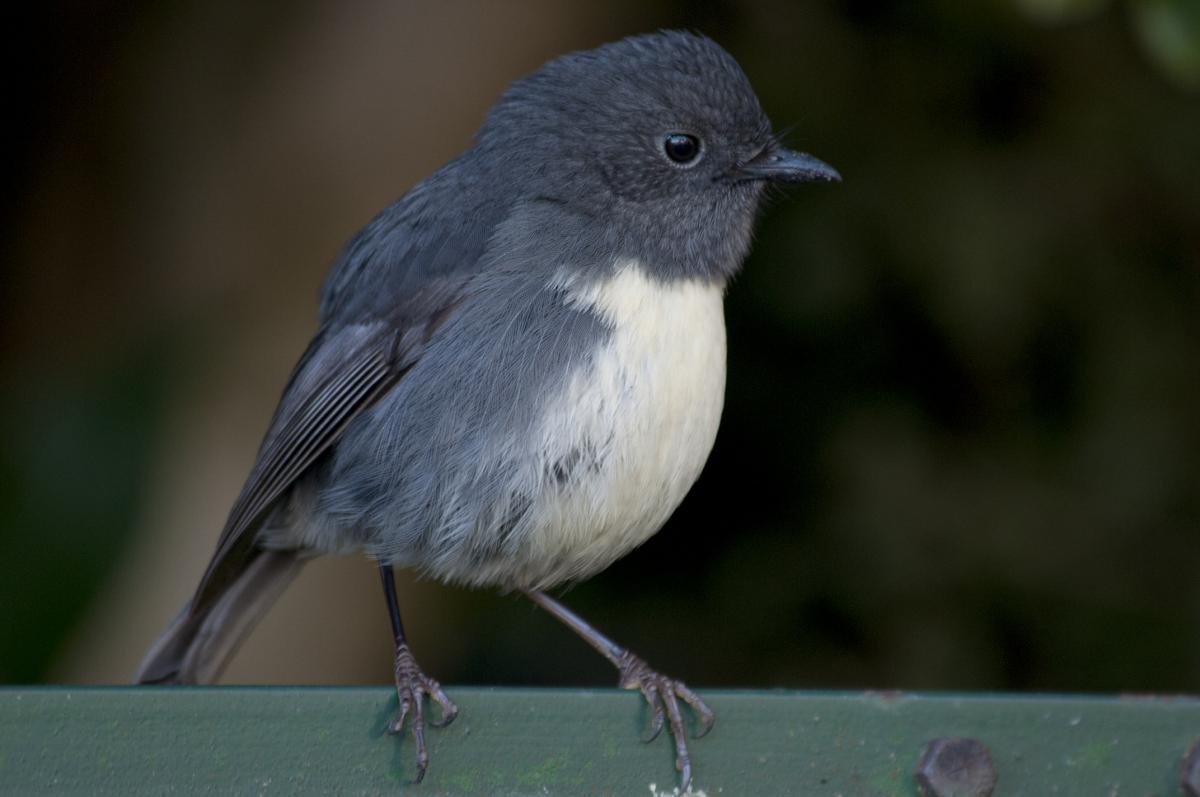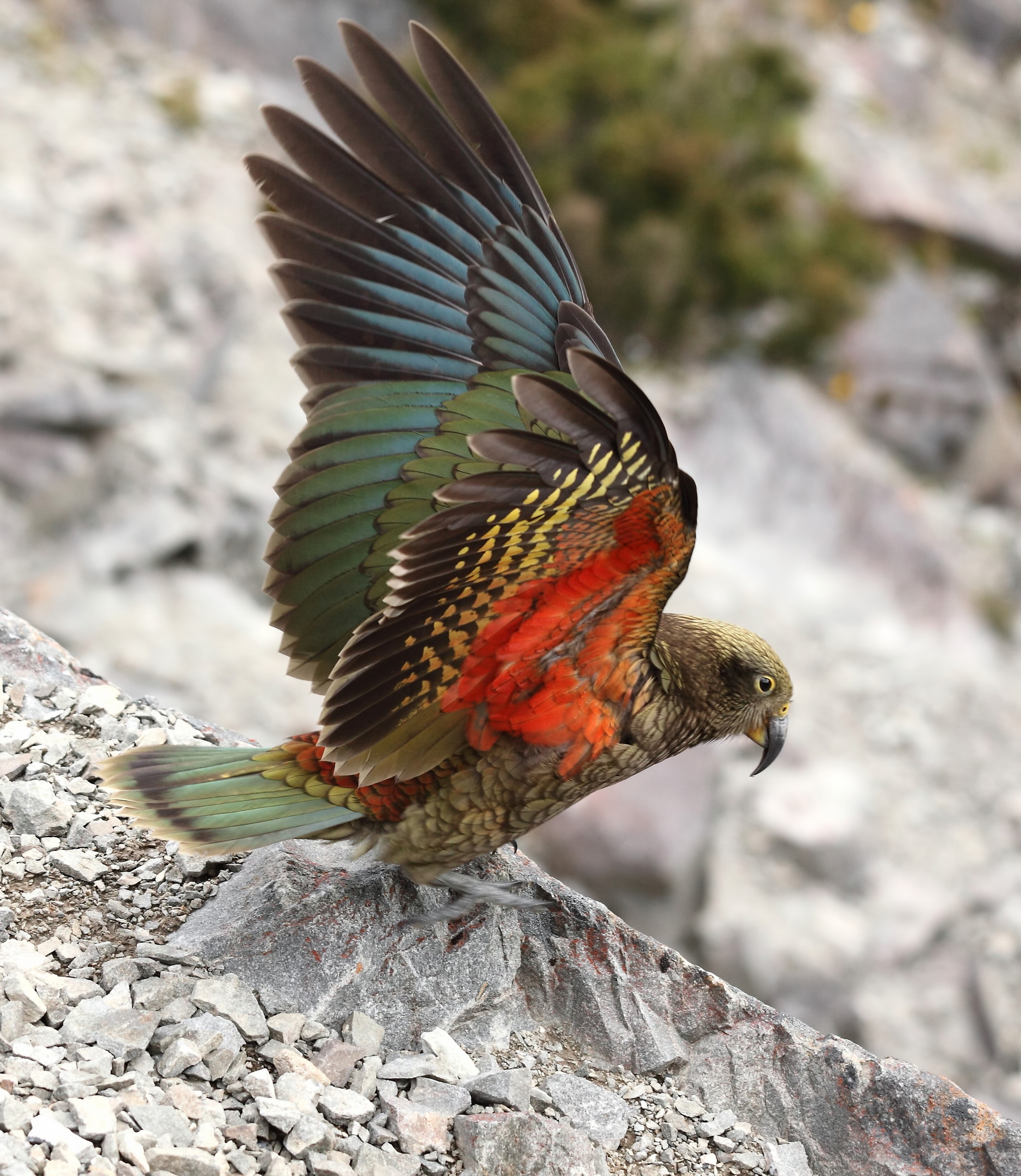What I already know
The South Island Robin is native to New Zealand.
What I want to know
In this section, I formed 5 inquiry questions in high-order to help me know what to research and organise my gathered information.
- What do they look like?
- What is their habitat?
- What do they eat?
- How do they breed?
- Is their species safe?
Researching online can give us many information resources but we need to be discerning which is reliable or true.
this section tells about the South Island Robin's physical appearance
Length: 18 cm
Weight: 35 g
A small songbird in which adult males have a dark grey-black head and upper body, brownish-black flight feathers and tail, and a sharply demarcated white to yellowish-white lower breast and belly; adult females have a light to dark grey upper body and a smaller, less distinctly demarcated breast-belly area. Adult birds are able to expose a small white spot of feathers above the base of the bill.
Habitat
Robins occur in mature forest, scrub, and exotic plantations, particularly those that are fairly mature with an open understorey. They seem to favour moist areas where there is an open understorey under a closed canopy on fertile soils. Habitats that tend to be shunned are those with widely scattered trees and where the ground is covered by grasses or sparse vegetation on stony, droughty soils.
Breeding
South Island robins start nesting in July, with the last clutches laid in December. The female builds the nest while her mate brings her food 2-3 times per hour. Only females incubate the 2-4 eggs; her mate calls her from the nest every 20 minutes or so to provide her with food. Both parents feed the nestlings. Nestlings leave the nest when about 3 weeks old, and continue to be fed by their parents for a further 5-6 weeks. If one fledgling is reared the male feeds it while the female builds a nest and incubates the next clutch. If there are two fledglings, each is usually fed by a different parent, and if three the male usually looks after two and the female one.
Food
While robins spend much time foraging on the ground, they also scan from perches for prey. Much of their diet consists of invertebrates, and large prey items include earthworms, cicadas, stick insects, tree weta and slugs. Slugs are wiped on the ground from side to side, presumably to get rid of slim, before being eaten. Robins also eat small ripe fruit in summer and autumn, particularly during drought when few soil-dwelling invertebrates are available.
source: http://nzbirdsonline.org.nz/species/south-island-robin (June 17, 2019)
Breeding
South Island robins start nesting in July, with the last clutches laid in December. The female builds the nest while her mate brings her food 2-3 times per hour. Only females incubate the 2-4 eggs; her mate calls her from the nest every 20 minutes or so to provide her with food. Both parents feed the nestlings. Nestlings leave the nest when about 3 weeks old, and continue to be fed by their parents for a further 5-6 weeks. If one fledgling is reared the male feeds it while the female builds a nest and incubates the next clutch. If there are two fledglings, each is usually fed by a different parent, and if three the male usually looks after two and the female one.
Food
While robins spend much time foraging on the ground, they also scan from perches for prey. Much of their diet consists of invertebrates, and large prey items include earthworms, cicadas, stick insects, tree weta and slugs. Slugs are wiped on the ground from side to side, presumably to get rid of slim, before being eaten. Robins also eat small ripe fruit in summer and autumn, particularly during drought when few soil-dwelling invertebrates are available.
source: http://nzbirdsonline.org.nz/species/south-island-robin (June 17, 2019)
This website used Wikipedia for their information. Other references are books from New Zealand. It uses words that are quite unfamiliar so I need to check it out.
-----------------------------------------------------------------------------------------------------------------------
I need to research furthermore by using different websites and other types of resources to link the ideas and make it more reliable.
I can use images to support the description of how they look like.

source:http://nzbirdsonline.org.nz/sites/all/files/
1200575South_Island_Robin_20110820_Kaikoura_Hills_NZ.jpg
source: https://commons.wikimedia.org/wiki/File:
070308_Stewart_Island_robin_on_Ulva.jpg
Although in these pictures, I cannot determine whether the one on the image is a male or female bird. I can use the information I gathered to help me identify their gender however, it will not be accurate.
--------------------------------------------------------------------------------------------------------------------
Chicks leave the nest when about 19 days old but are fed by the parents for a further five to six weeks. A pair may produce two clutches each season; the male will feed the fledglings while the female builds another nest and incubates the next clutch.
source: https://www.wildernessmag.co.nz/south-island-robin/ (June 18, 2019)
fledgeling - a young bird that has just fledged
fledge - develop wing feathers to be able to fly
clutches - tight grasp
cached - store away for future use
juveniles - young
monogamous having only one mate at a time
The texts I got from different sources have flaws in spellings and grammar. This affects its reliability.
--------------------------------------------------------------------------------------------------------------------
This paragraph shows a comparison between South Island Robins to other two birds that are commonly mistaken with each other.
The South Island robin is a small passerine, 10–18 cm in length and weighing around 35 g. North Island robins do resemble both females and juveniles of the South Island robins, as well as all the Stewart Island robins, which can sometimes make it difficult to distinguish between the three. The females and juveniles within a particular group of robins look similar to each other, although newly independent juveniles may not yet have the more lightly coloured breast patch. However, North Island males are almost black with a white spot just above the beak as well as the greyish-white lower breast. Females and juveniles are greyer with more variable pale patches on their breasts and throats. South Island males are dark grey except for the distinct yellowish white lower chest, while females and juveniles are again lighter grey with a less distinct breast. Finally, Stewart Island robins look similar to North Island robins (males and females).
New Zealand robins are relatively long-lived; life-spans of at least 14 years have been recorded in the wild.
Breeding and interaction between mates
South Island robins are genetically monogamous, and extra-pair paternity is rare. As they do typically remain monogamous, are non-migratory, and remain on their breeding territories year-round, a male and female in one territory will compete for food resources during non-breeding times. Competition is reduced somewhat by slightly different foraging methods, however they can and will steal from their mate's cache if given the opportunity. Males do dominate females, and thus will aggressively exclude females from food, such that females will only access food sources when unattended by the males. During breeding season, the female is solely responsible for nest building and incubation, and the male will provide the female and the hatchlings with food.
South Island robins become sexually mature between six and 12 months of age. They begin their breeding season fairly early in August or September (Southern Hemisphere spring) and thus can make use of the winter's remaining food stores during this time. They build open-cup nests in tree-forks or inside tree cavities. Incubation lasts 18 days, and chicks leave the nest after 21 days. Five to 25 days after fledglings leave the nest, the pair may breed again. Modal clutch size is two eggs with the expected inverse correlation between size and number of eggs. Replacement clutches in the case of loss of eggs or nestlings to predation can be produced relatively rapidly, within 3–10 days.
Their food
Invertebrates, including earthworms, beetles, and other arthropods foraged from the leaf litter comprise most of the South Island robins' diet. Invertebrate prey may be cached whole or in portions. Single items are cached at separate sites. Prey is typically stored within 10 metres of where it was procured, even if the bird is outside its own territory. In the winter the primary cache is earthworms, while during the summer the trend is toward cicadas. South Island robins have a very good memory of their storage sites; a male was observed to empty as many as five consecutive caches before returning the stores to his mate during incubation. The birds have demonstrated an ability to differentiate and prioritise caches of varying sizes, up to 12 total items, without any training, which appears to be the highest recorded numerical competency of any wild animal. Because of its high metabolic rate, a robin might spend as much as 90% of its day foraging or storing during the winter. South Island robins have also been observed to eat berries on occasion, however these are not cached.
source: https://en.wikipedia.org/wiki/South_Island_robin (June 18, 2019)
South Island robins become sexually mature between six and 12 months of age. They begin their breeding season fairly early in August or September (Southern Hemisphere spring) and thus can make use of the winter's remaining food stores during this time. They build open-cup nests in tree-forks or inside tree cavities. Incubation lasts 18 days, and chicks leave the nest after 21 days. Five to 25 days after fledglings leave the nest, the pair may breed again. Modal clutch size is two eggs with the expected inverse correlation between size and number of eggs. Replacement clutches in the case of loss of eggs or nestlings to predation can be produced relatively rapidly, within 3–10 days.
Their food
Invertebrates, including earthworms, beetles, and other arthropods foraged from the leaf litter comprise most of the South Island robins' diet. Invertebrate prey may be cached whole or in portions. Single items are cached at separate sites. Prey is typically stored within 10 metres of where it was procured, even if the bird is outside its own territory. In the winter the primary cache is earthworms, while during the summer the trend is toward cicadas. South Island robins have a very good memory of their storage sites; a male was observed to empty as many as five consecutive caches before returning the stores to his mate during incubation. The birds have demonstrated an ability to differentiate and prioritise caches of varying sizes, up to 12 total items, without any training, which appears to be the highest recorded numerical competency of any wild animal. Because of its high metabolic rate, a robin might spend as much as 90% of its day foraging or storing during the winter. South Island robins have also been observed to eat berries on occasion, however these are not cached.
source: https://en.wikipedia.org/wiki/South_Island_robin (June 18, 2019)
This research process about South Islan Robin went well. Many online resources give enough information, however, I need to be discerning whether it is reliable or true. Using inquiry questions helped a lot because it serves as my guide to where my research will have to go. It is also quite frustrating to read so many texts but is useless at the end. I think I develop my skim, scan, close-reading skills in this activity. After skimming and scanning, I can easily determine whether I can use it or not.





